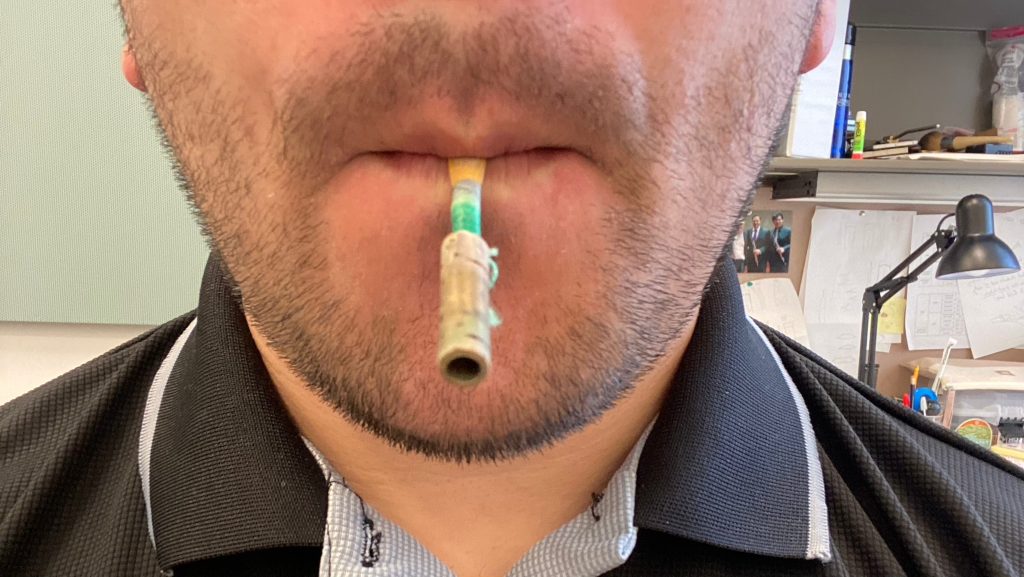How to do a good warm-up with the Oboe Reed
Place the tip of the reed on the lower lip. Wrap your lips around the reed. The TIP of the REED and the LOWER LIP move as a unit. Make a sound with the reed in your mouth. Take the cane out of your mouth. Using arms as heavy objects so that they help keep the reed out of the mouth instead of pushing it. The shape of the embouchure should be round, or a vertical oval like an egg (never flat), the chin in a down position, the corners pushed in, and the jaw open. All this is to improve the embouchure technique.

Hold the reed by placing your right thumb under the cork, your right index finger on top of the thread, and the tip of the reed on your lower lip. (Hold the reed at a 45 degree angle – this is IMPORTANT.) These three points of contact are similar when you hold the oboe with your right thumb under the thumb rest, left index finger on the B/middle hole key and the tip of the reed on your lower lip.
Notice that you can turn the lip and reed in for higher tones and out for lower tones. Blow through the reed and find the pitch that is sounding, it will probably be around B flat. Then you should practice pitch blending on the piano between G1 and C2. Practice from your most comfortable pitch going up to C and down to G. Chromatically play C, B, Bb, A, Ab, G. You can play the song Maria Had a Little Lamb in LAb starting on C or inG starting on B.

keep your tongue in an “eeeeee” position. The tongue says “eeee” and the lips say “uuuuuu” so “teeeuu” is the embouchure. It has been proven that your throat is more open and unrestricted when you say the syllable “te”.
The tone emitted by the reed should sound “free” (not tight, or unfocused). Freedom is that the jaw remains open (without biting) and the wind moves fast. Be generous with the air. Use enough air. Do not block the muscles that blow and force the air. The speed of the air is the best way to learn how to use your blowing muscles to play the oboe.

